If you’ve been on the road and noticed that your adaptive main beam assist system isn’t functioning as it should, you’re not alone. Drivers often encounter issues with their car’s adaptive headlights, which can be frustrating and potentially dangerous. so yes, adaptive main beam assist inoperative issues can be a headache sometimes!
In this blog post, we’ll dive into the common reasons why your adaptive main beam assist might be inoperative, from sensor malfunctions to electrical issues. We’ll also provide some hints on what steps you can take to troubleshoot the problem before seeking professional help. So, buckle up, and let’s shed some light on addressing this headlight hiccup.
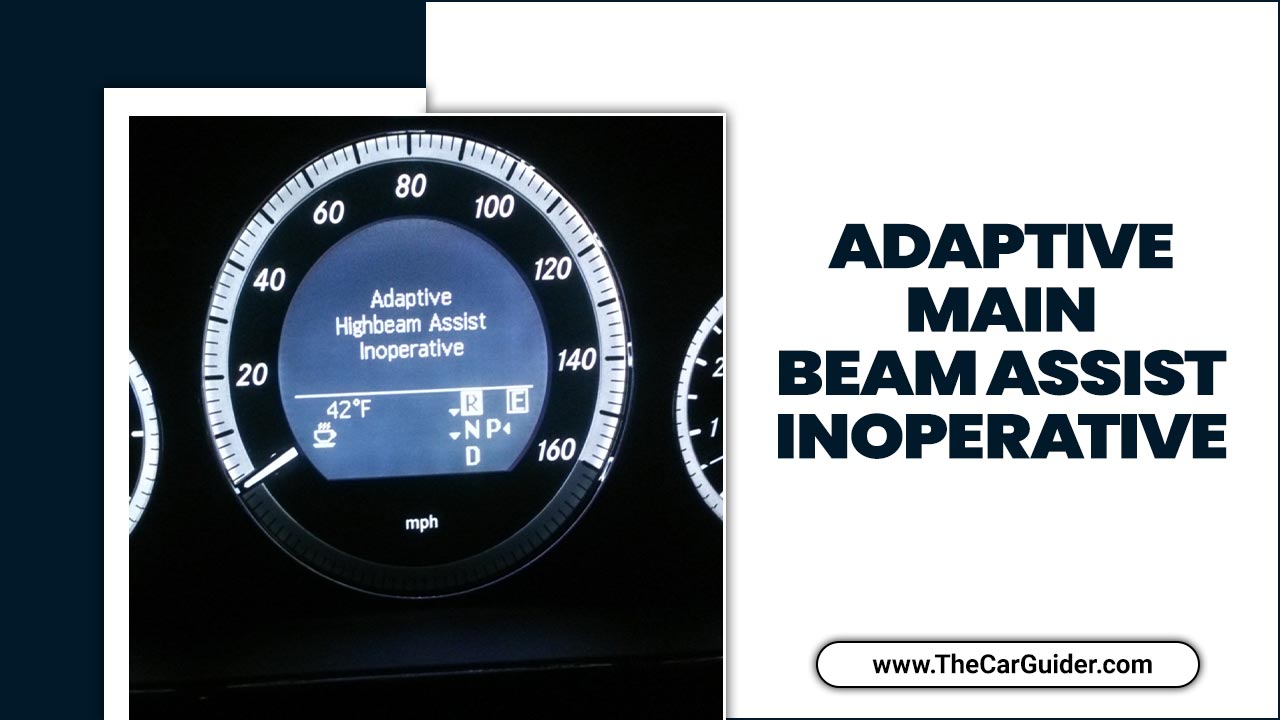
Key Highlights
- The Adaptive Main Beam Assist (AMBA) system is a safety feature that optimizes visibility for drivers at night.
- Malfunctions in the AMBA system can arise from various factors, including sensor issues and electrical problems.
- Ignoring warning messages related to AMBA inoperability can lead to reduced visibility and an increased risk of accidents.
- Promptly troubleshooting or seeking professional help ensures optimal system functionality and safer driving at night.
- Regular maintenance, including cleaning sensors and staying updated with software, can help prevent future AMBA malfunctions.
Understanding Adaptive Main Beam Assist (AMBA) Technology
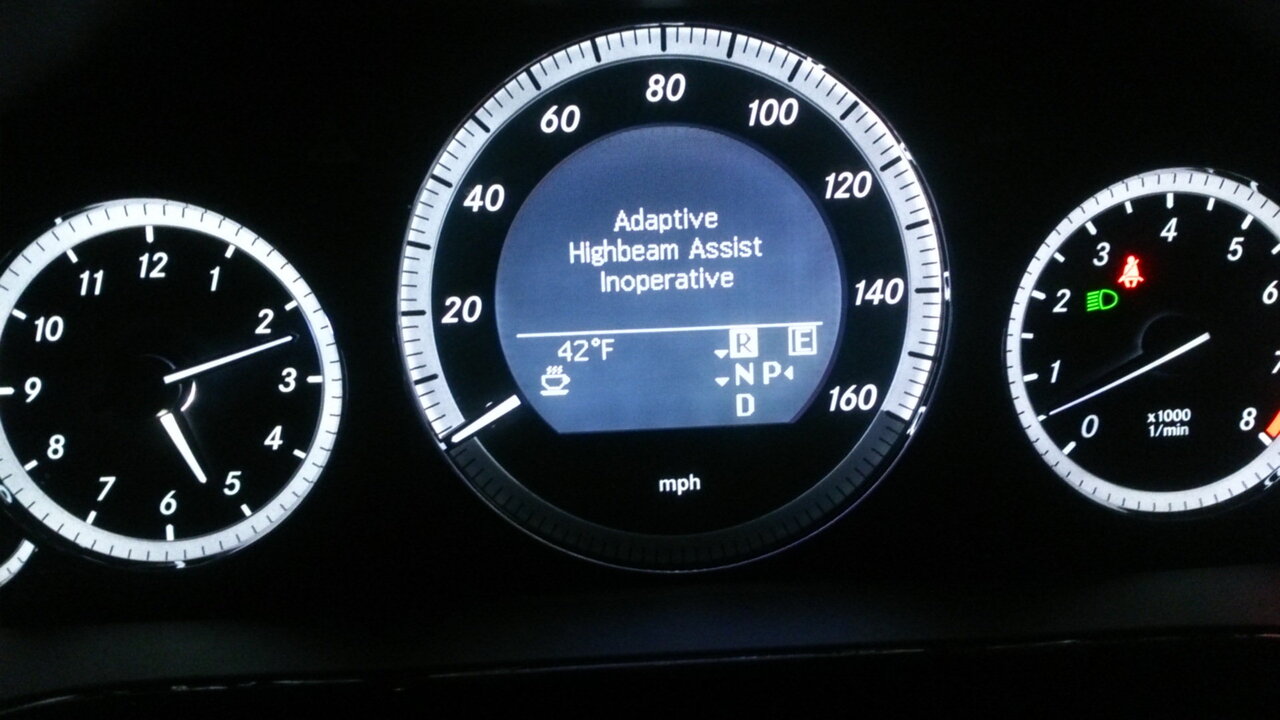
Adaptive Main Beam Assist (AMBA) technology, also known as automatic high beam control, is a vehicle feature designed to improve nighttime driving visibility without dazzling other road users.
It automatically adjusts the vehicle’s headlights between high and low beams based on the surrounding traffic and road conditions. Using sensors such as cameras or lidar, the system detects approaching vehicles or road lighting.
It selectively dims the headlights to prevent glare for other drivers while maintaining optimal visibility for the driver. This technology enhances safety by providing better illumination of the road ahead without causing discomfort or distraction to other road users.
Features Of AMBA:
- Intelligent Light System: AMBA is part of the vehicle’s intelligent light system, including adaptive high and low beam functions.
- Adaptive High Beam: The system dynamically adjusts the headlamp’s high beam to avoid blinding oncoming traffic or vehicles ahead.
- Low Beam Integration: During low light conditions, the system switches to low beam mode to maintain visibility without causing glare to other road users.
- Safety for Road Users: AMBA prioritizes the safety of all road users by providing optimal illumination while minimizing the risk of glare or discomfort.
Common Reasons For The “Adaptive Main Beam Assist Inoperative” Warning
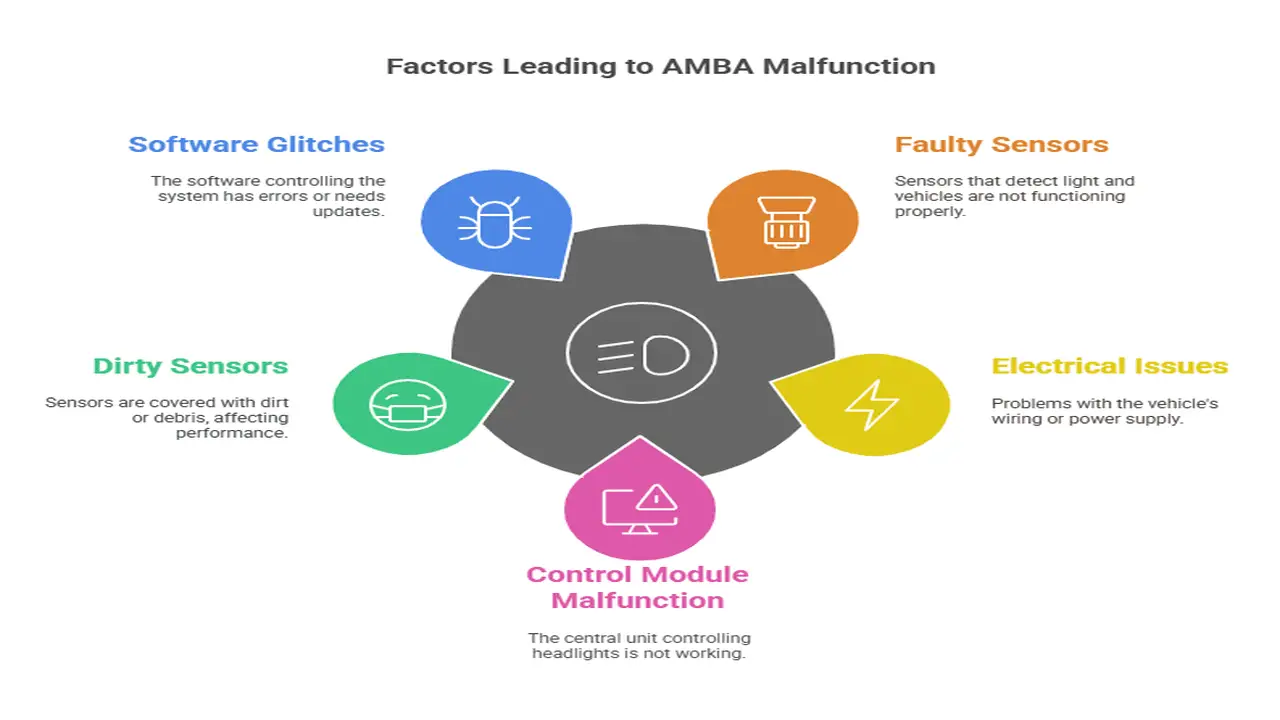
- Faulty sensors or cameras
- Electrical issues
- Malfunctioning control module
- Dirty or obstructed sensors/cameras
- Software glitches or updates needed
The “Adaptive Main Beam Assist (AMBA) Inoperative” message indicates your vehicle’s intelligent light system malfunction.
AMBA technology automatically adjusts the headlights between low and high beam settings based on road conditions and the presence of other road users. This feature enhances visibility without dazzling other drivers, contributing to safer nighttime driving experiences.
Impact On Visibility And Safety While Driving At Night

Warning of AMBA Inoperative can affect night visibility and safety while driving. AMBA technology plays a crucial role in optimizing visibility by automatically adjusting the headlights between low and high beam settings based on road conditions and the presence of other road users.
Without this feature, drivers may experience reduced visibility, especially on poorly lit roads or adverse weather conditions. The lack of adaptive high beam functionality could increase glare for oncoming traffic or vehicles ahead, potentially compromising safety for all road users.
Additionally, the absence of AMBA may limit the driver’s ability to navigate dark or unfamiliar roads effectively. To address this issue, drivers should promptly perform troubleshooting steps, such as checking light bulbs and consulting the instrument panel for error codes, or seek professional assistance to restore the functionality of this crucial safety feature.
The Importance Of Addressing The Issue Promptly
If you encounter an “Adaptive Main Beam Assist (AMBA) Inoperative” message, addressing the issue promptly is crucial for several reasons. First and foremost, the safety of both you and other road users is at stake.
The AMBA system optimizes visibility while driving at night, ensuring you can see the road ahead clearly without dazzling oncoming traffic. Addressing the issue promptly is crucial because:
- Ensures proper functionality of the adaptive main beam assist system
- Maintains optimal visibility and safety during night driving
- Prevents potential accidents or collisions due to reduced visibility
- Avoids further damage or malfunctions in the vehicle’s lighting system
- Upholds compliance with safety regulations and road laws
How To Fix?
The message “Adaptive Main Beam Assist Inoperative” indicates a malfunction or issue with the Adaptive Main Beam Assist system in your vehicle. This system automatically adjusts the vehicle’s high beam headlights to provide optimal visibility without dazzling other drivers.
The warning suggests that the system is not functioning correctly, potentially due to a fault in the sensors, wiring, or control module associated with the Adaptive Main Beam Assist feature.
- Check Sensors: Start by inspecting the sensors and cameras associated with the Adaptive Main Beam Assist system. Ensure they are clean, free from obstructions, and properly aligned.
- Reset System: Try resetting the system by turning off the vehicle’s ignition for a few minutes and then restarting it. Sometimes, this simple reset can resolve minor issues.
- Inspect Wiring: Examine the wiring harnesses and connectors related to the Adaptive Main Beam Assist system for any signs of damage, corrosion, or loose connections. Repair or replace any damaged components as needed.
- Scan for Fault Codes: Use a diagnostic scanner or OBD-II scanner to check for fault codes stored in the vehicle’s computer system. These codes can provide valuable insight into the specific issue causing the warning message.
- Professional Inspection: If you’re unable to diagnose or fix the problem yourself, it’s best to take your vehicle to a qualified mechanic or dealership for a thorough inspection and repair. They have the tools and expertise to identify and address complex issues with the Adaptive Main Beam Assist system.
What If Ignored The Warning?
Ignoring this issue could lead to compromised visibility, increasing the risk of accidents. Additionally, resolving the problem promptly can prevent further damage to related components, such as light bulbs, fuses, or the active light function.
Whether a simple fix like replacing a faulty light bulb or a more complex issue involving the light switch or fuses, consulting a qualified technician ensures that your vehicle’s safety systems remain operational for your peace of mind and the safety of all road enthusiasts.
Potential Costs Associated With Repairing Amba Systems

The cost of repairing Adaptive Main Beam Assist (AMBA) systems can vary depending on the extent of the malfunction and the specific components needing repair or replacement. However, repairing an AMBA system can range from $200 to $800. Factors that may influence the cost include:
- Diagnostic Fees: Diagnostic tests may be required to identify the exact cause of the AMBA malfunction, which can incur additional fees.
- Parts Replacement: The cost of replacing faulty components such as sensors, modules, or wiring harnesses can contribute significantly to the overall repair cost.
- Labour Charges: Labor costs for the skilled repair technicians will also affect the final price.
Seeking Professional Help To Diagnose And Fix The Problem
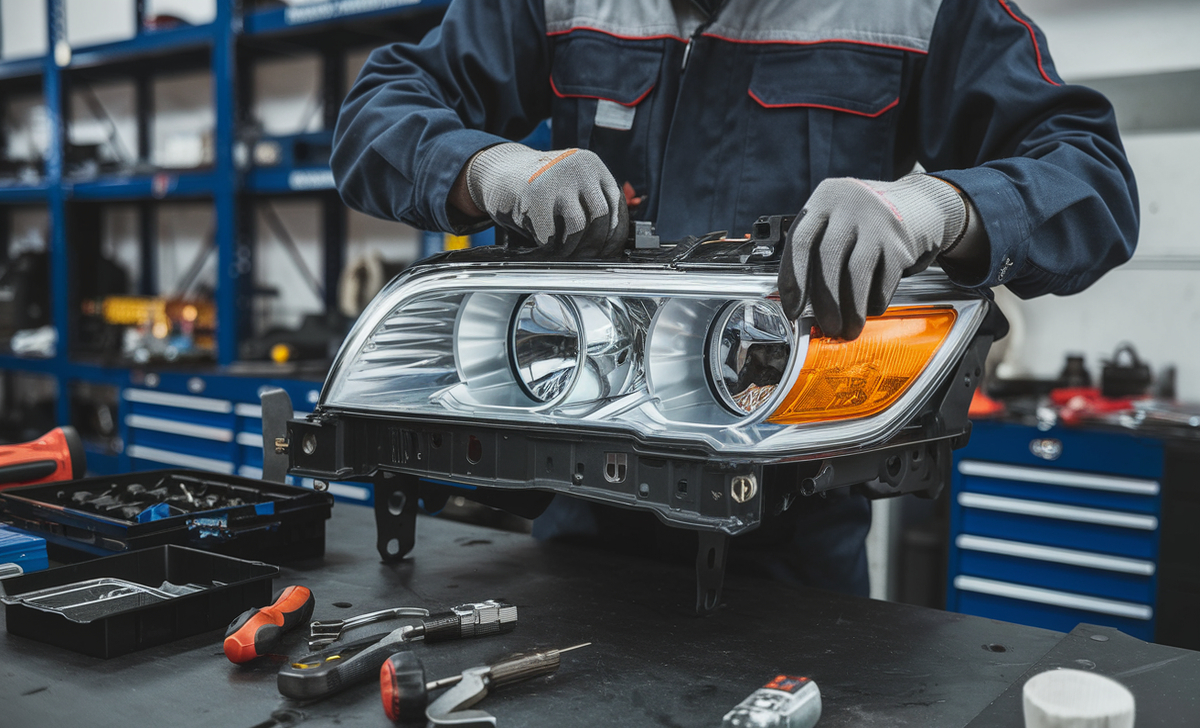
If you encounter an “Adaptive Main Beam Assist Inoperative” message, seeking professional help is essential to diagnose and fix the problem effectively. Professional technicians have the expertise to assess the functionality of your vehicle’s headlight assembly, including the adaptive main beam assist system.
- Software Update and Reprogramming
Service | Description |
Diagnostic Assessment | Identifying the root cause of the AMBA malfunction (e.g., faulty sensors, wiring issues, software glitches). |
Sensor Inspection & Calibration | Inspecting sensors for damage or misalignment and performing necessary calibrations. |
Software Update & Reprogramming | Updating the AMBA system’s software to the latest version to address any known bugs or glitches. |
They will inspect components like light stalk, wiring, and sensors to identify faults or malfunctions. Depending on the issue, they may recommend repairs or modifications to restore proper functionality.
Attempting DIY fixes without proper knowledge or equipment can lead to further complications. Trusting the expertise of trained professionals ensures the problem is addressed correctly. Good luck with resolving the issue!
Preventive Maintenance Tips To Avoid Future Malfunctions In Amba Systems
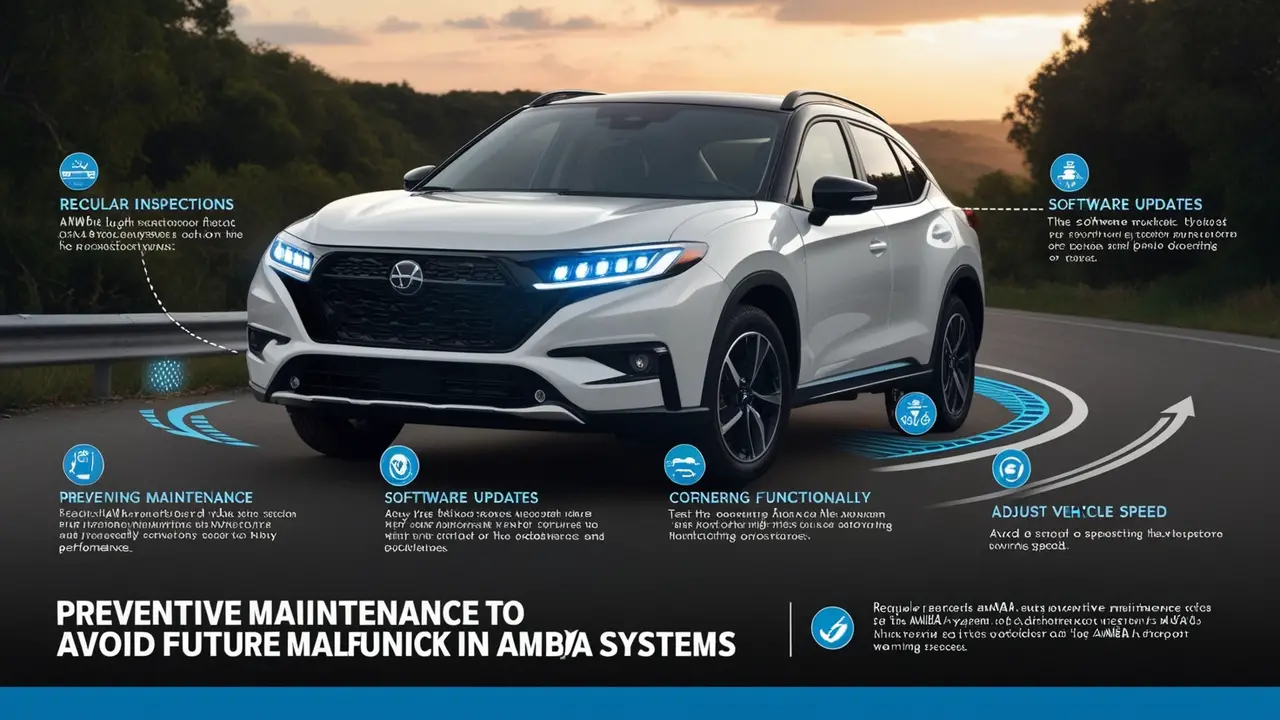
Regular preventive maintenance is essential to prevent future malfunctions in Adaptive Main Beam Assist (AMBA) systems and ensure optimal performance. AMBA technology enhances driving safety by automatically adjusting the vehicle’s headlights. Functioning based on road conditions and the presence of pedestrians or other vehicles.
Preventive Maintenance Tips:
- Regular Inspections: Schedule regular inspections of the AMBA system, including LED light modules and sensors, to detect potential issues early.
- Software Updates: Stay updated with the latest software versions the manufacturer provides to address any software glitches or bugs.
- Cornering Functionality: Test the AMBA system’s cornering functionality periodically to ensure proper operation during turns.
- Adjust Vehicle Speed: Avoid excessive speeds, as the AMBA system’s effectiveness may be compromised at higher vehicle speeds.
- Interpret Warning Messages: Respond to warning messages indicating AMBA malfunctions and promptly address them to prevent further issues.
By following these preventive maintenance tips, you can minimize the risk of future malfunctions in your vehicle’s AMBA system and ensure safe driving experiences.
Conclusion
It is important to address the “Adaptive Main Beam Assist Inoperative” issue in your Mercedes Benz. Various factors, such as a faulty auto light sensor, defective headlight bulbs, a faulty or obstructed camera, or a dirty windscreen, can cause this problem.
To fix this issue, you should check and replace any defective components, clean your car’s windscreen regularly, and update the software. By taking these steps, you can ensure that your Adaptive Main Beam Assist is functioning properly and providing you with the necessary assistance while driving. Don’t ignore this issue, as it can affect your safety on the road.
Frequently Asked Questions
1.What Is Mercedes Adaptive Main Beam Assist?
Ans: Mercedes adaptive main beam assist is a feature that automatically adjusts headlight brightness based on traffic and surroundings, improving visibility at night and reducing the risk of blinding other drivers. It can be manually turned on or off.
2.What Is Main Beam Assist?
Ans: Main beam assist is a feature in certain vehicles that automatically adjusts between high and low beams while driving. It utilizes sensors to detect oncoming traffic and optimize headlight output. This enhances visibility at night and reduces the risk of blinding other drivers.
3.Where Is The Adaptive High beam Assist Sensor On A Mercedes?
Ans: A Mercedes’s adaptive high beam assist sensor is typically located behind the rearview mirror. It uses a camera to detect oncoming traffic and adjust the headlights accordingly. If you receive an “adaptive main beam assist inoperative” message, consult with a certified Mercedes technician for proper diagnosis and repair.
4.How Do You Activate High Beam Assist On Mercedes?
Ans: To activate high beam assist on a Mercedes, simply turn on the headlights and push the lever forward. The high beam assist will automatically engage in low-light conditions without incoming traffic. Some Mercedes models may require enabling this feature in the vehicle settings menu.
5.What Is Adaptive Headlight Failure?
Ans: Adaptive headlight failure refers to a malfunction or issue with a car’s adaptive headlights, which are designed to adjust the direction and intensity of the headlights based on factors such as the vehicle’s speed, steering angle, and the presence of other vehicles.
6.How Do You Enable The Adaptive High beam Assist On Your Mercedes?
To activate adaptive high beam assist on your Mercedes, locate the lighting control on your dashboard. Select the high beam option and ensure the adaptive feature is enabled in the vehicle settings menu.
7.How Do You Turn On High Beam Assist On A Mercedes?
High beam assist on a Mercedes is typically activated by pulling the lighting stalk toward you. Ensure the vehicle is equipped with this feature and that it’s enabled in the settings menu.
8.Does Your Metrics Have The Auto High Beam Assist Feature Or Not?
Whether your Metris has auto high beam assist depends on the model and trim level. Consult the vehicle’s manual or contact a Mercedes dealership for specific information regarding your vehicle’s features.
9.Why Is Your High Beam Assist Not Working?
High beam assist issues could stem from various factors such as a software glitch, vehicle lighting system modification, problems with the passenger-side sensor, or issues with the dipped beam headlights. Consult a qualified technician to diagnose and resolve the problem.